This month’s featured guest, Thomas Little, approaches his work with slime molds and ink he makes from guns with an inspiring mix of deep curiosity and relentless exploration. His relationships with the materials he works with move beyond direct, objective observation, but they’re not exploitative, either. His respect and connection create a true collaboration.
Interview: Thomas Little
What sort of work do you do?
I am an inkmaker at the helm of A Rural Pen Inkworks. I take guns out of circulation, dissolve them in acid to produce iron sulfate, which in turn provides the prima materia for iron tannate ink and iron oxide pigments such as Mars Red and Mars Black. I sell my ink and also use it in my own art pieces.
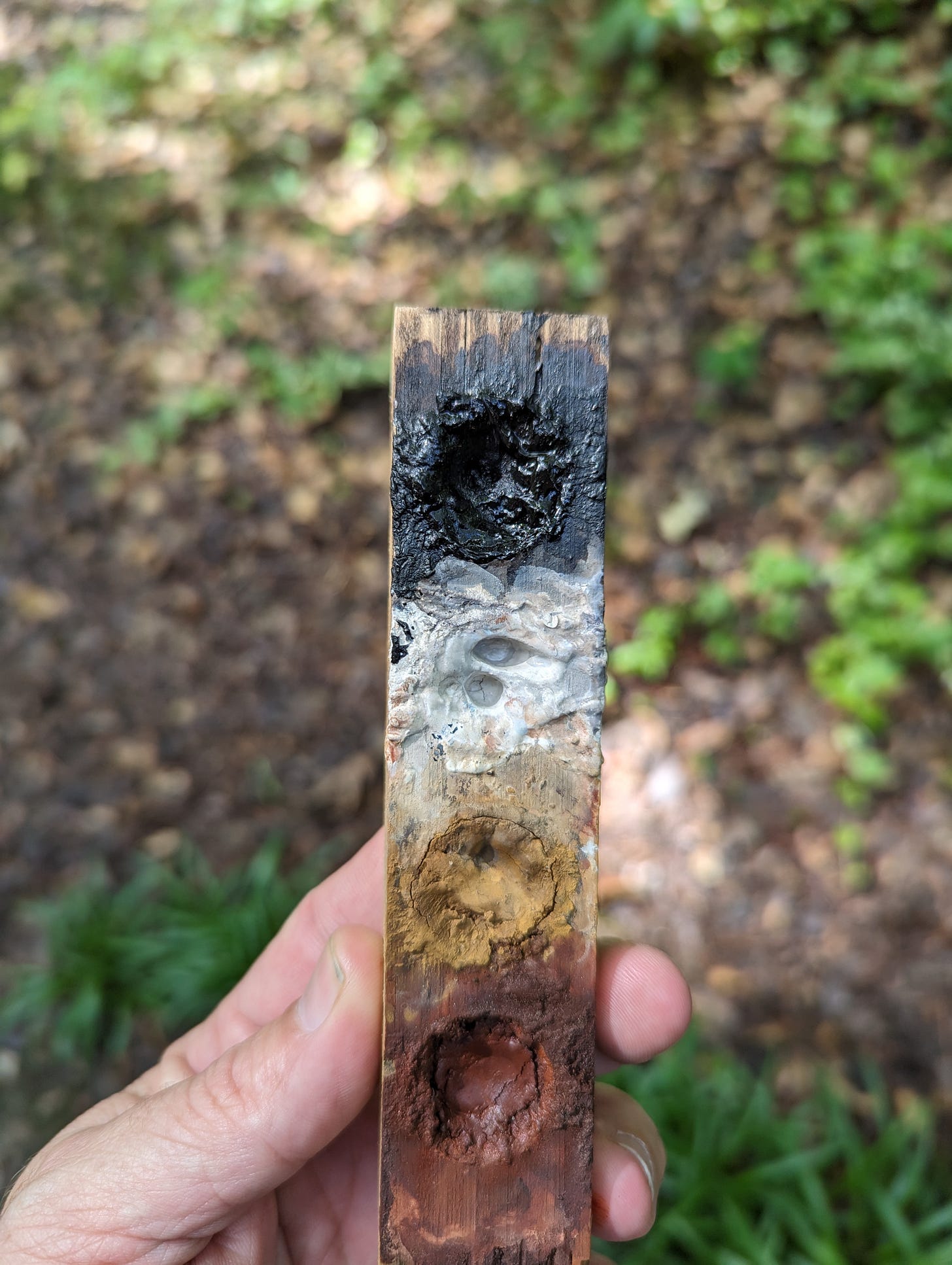
What aspect of your work is most important to you?
I strive to find a place of integrity to operate as an artist and crafts person. I am often discouraged by what occurs within the sphere of the arts. It is a rarefied environment that seems out of touch with the state of the world, and seems disingenuous when it engages with the harder truths we are presented with on a daily basis. For me, the engagement with this condition begins on the material level. That is what is important to me.
How are science, art, and writing part of your work, and how is the interaction between these areas important to you?
This is the alchemical realm of my mind! I find the confluence of these things the most generative place to work from. When I am looking in a flask as a chemical reaction occurs, I am seeing poetry, I am seeing a thread of the universe that makes up its fabric. It is simultaneously sacred and mundane. The aspect of alchemy that resonates with me is that it provides a nexus in which science, art, magic, animism, medicine, all occupy a narrative that points to something. More often than not, that is a place of mystery. Without that mystery, I would be at a loss for inspiration.
Is there a particular scientific or environmental problem that feels important to you? What do you do about that?
There are certainly many, but the one that is central to my work is to abate the degradation of humanity. It may not seem to be the most pressing when we see the unfolding crises of our burning world, but I feel it is the most necessary. Eliminating our suffering and debasement is the only way we will be free. Free to act, responsibly rather than reactively, in regards to the tangible and soluble problems of the physical world. Granted, this is perhaps a high-minded and naive perspective in the face of the hydraesque set of factors keeping the status quo in place. But any work in that direction is the Great Work, even if it is as small as a bottle of ink made from a gun.
How does your identity affect your work?
Well, I grew up queer and poor in an economically depressed and environmentally damaged place. None of those things have changed, I should note. I come from a place of disenfranchisement and have learned that operating through conventional channels is at best ineffective, at worst corrupting. So I availed myself to one of the most useful tools of the powerless: subversion. Subversion for good. It is reflected in my work with making ink from guns and in the art I create.

What influences and inspires you?
While this may seem at odds with my precious comments about integrity, and also pose a risk to my reputation, I find inspiration in conmen, quacks, and charlatans! Let me emphasize, I don't find the motivations of greed or power inspiring at all. It is the level of ingenuity employed, the atmosphere of charisma, the ability to persuade. I suppose a more apt example would be a barker at a carnival tent. They are pitching an investment in the unknown, and it takes some chutzpah to do that. It is that skill I find inspiring, and I think it is one worth honing. In order to jar someone out of an imposed banality and see a path to something better, some audacity must be employed.
Are you interested in collaborating with other groups or individuals on science-art-writing projects? If so, what sorts of collaboration are you interested in, and what are you most excited to share?
Oh most definitely! I am always willing to teach what I have learned in the realm of ink and pigment making, and in turn learn from others. One thing that I have been excited to learn more about is the printing process, and how the pigments I make can be employed in that department. Through experimentation (and trust on the behalf of the printer to allow me use the press!) I think a printing ink derived from guns could be made, and a potential Gutenberg moment could be achieved!
You’ve also used your inks and pigments in your work with slime molds. Could you talk more about that?
On the materials: I use a restricted palette of pigments, mostly fabricated from very psychically charged objects: handguns. Through chemical and alchemical means, these objects are transmuted into iron oxide pigments, including Black Iron Oxide (Mars Black, magnetite, lodestone) and Red Iron Oxide (Mars Red, red ochre, Saffron of Mars). The primacy these two colors play in human perception, compounded with the ancient associations with Iron as well as their origin as weapons, make them ideal in constructing objects that resonate with a specific intersectionality.
I’d love to hear more about the process. How do those materials interact with the slime mold?
The first component created is an inkblot using Black Iron Oxide ink doped with Valerian Root extract. A series of these are made for fractal dimension analysis. I take advantage of studies utilizing decades of data culled from Rorschach Test results to achieve this. To briefly explain, a box counting algorithm is used to calculate the fractal dimension of the inkblot. This value, between 1 and 2, is compared to the amount of percepts ("things" perceived) found in the original Rorschach Test blots. The data concludes that inkblots with a fractal dimension around 1.1 yield the most percepts. After using software to obtain the fractal dimension of my inkblots, I use this value to calibrate a visual instrument that could potentially yield the most percepts. In this way, one can gauge the "hauntedness" of the blot. I call this the Induction Resonator.
Engineered within this inkblot is a hollow, a "corpus cava" into which the next component is placed. This is a small portion of oat gruel impregnated with Red Iron Oxide. Atop this is placed a live culture of Physarum polycephalum, an ancient organism commonly known as slime mold. Technically, Physarum is not a mold, but a population of amoebae that engages in incredibly sophisticated behaviors. It is truly a Protean creature. Through its collective action, it seems to exhibit intelligent behavior. It can solve mazes, learn through habituation and external memory, and merge with other populations and imbue them with the knowledge it has collected. It also can be a pigment vehicle. It leaves the gun-derived Red Iron Oxide, along with other waste, embedded in the slime trails it leaves behind as its external memory. By coloring the slime trails, it can leave a record, visible to the human eye, of its decisions.

Here is where the Valerian Root extract comes into play, acting as a chemotactic agent, which is to say, influencing the slime mold's behavior through chemical components. The population I work with is repulsed by Valerian Root, causing the slime to navigate around such stimuli. In its exploration of the inkblot, it leaves behind a record, in red, of its interpretation of its environment. An interpretation of an inkblot. The living slime mold is then evacuated from the paper.
What is left behind after all of that?
With the two components combined, the resulting image becomes a kind of ghost anatomy, a partially realized creature, hovering in the liminal space between living organism and supernatural entity. A fossil of something yet to be, made from the Iron of weapons yielding to earth. It is simultaneously visceral and ethereal, suggesting both birth and death. They are a dialogue of form between an ancient creature that flows like blood and a spectral vision, its symmetry casting shadows of ancient predators and visages of edifying ancestors. They are totemic psychopomps, devices designed to unsettle so that we may re-evaluate, and see deeper in all directions.
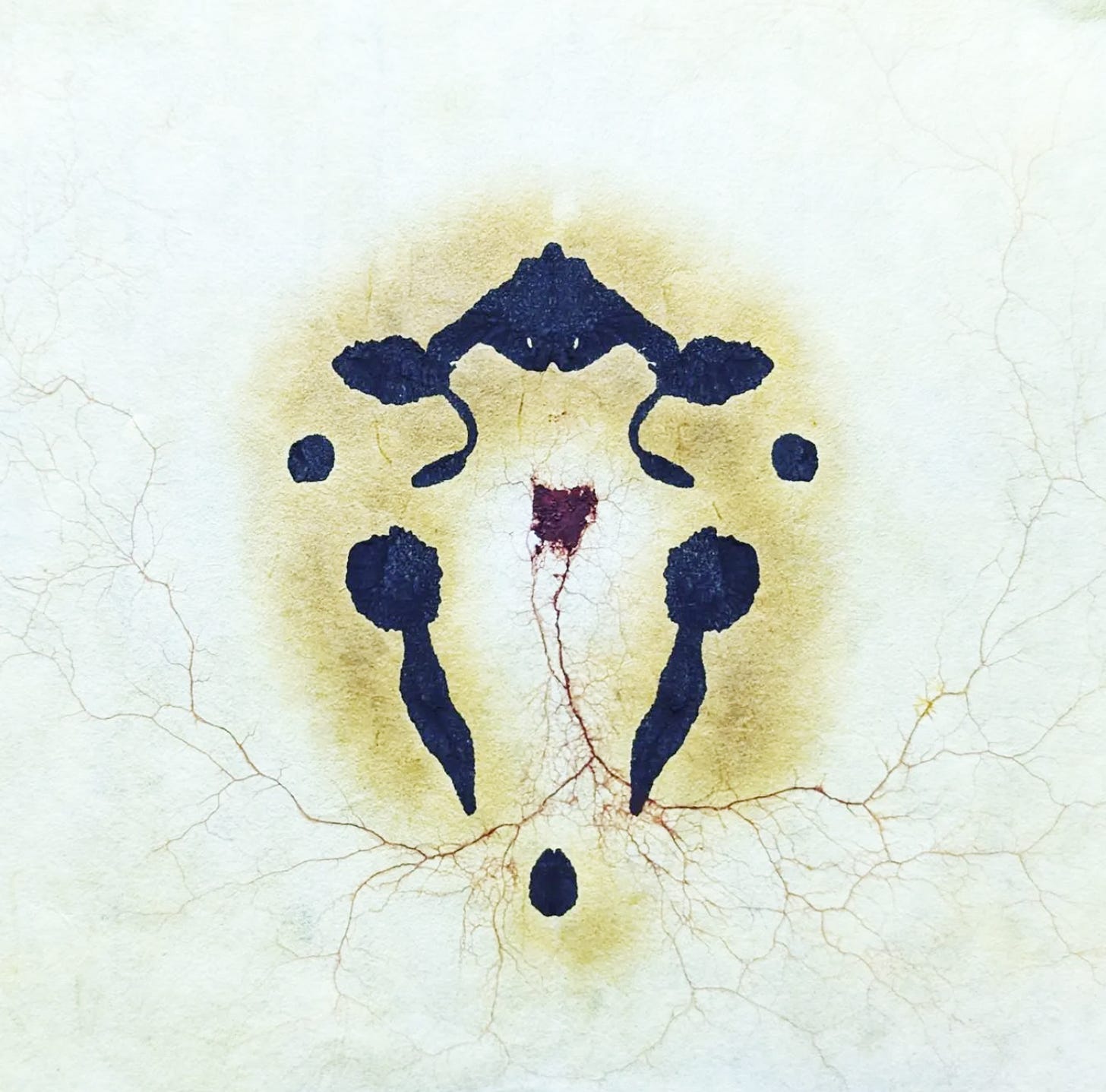
Thank you, Thomas!
You can learn more about Thomas’s work here. And check out his amazing ink! It’s available at these locations, many of which will ship to you.




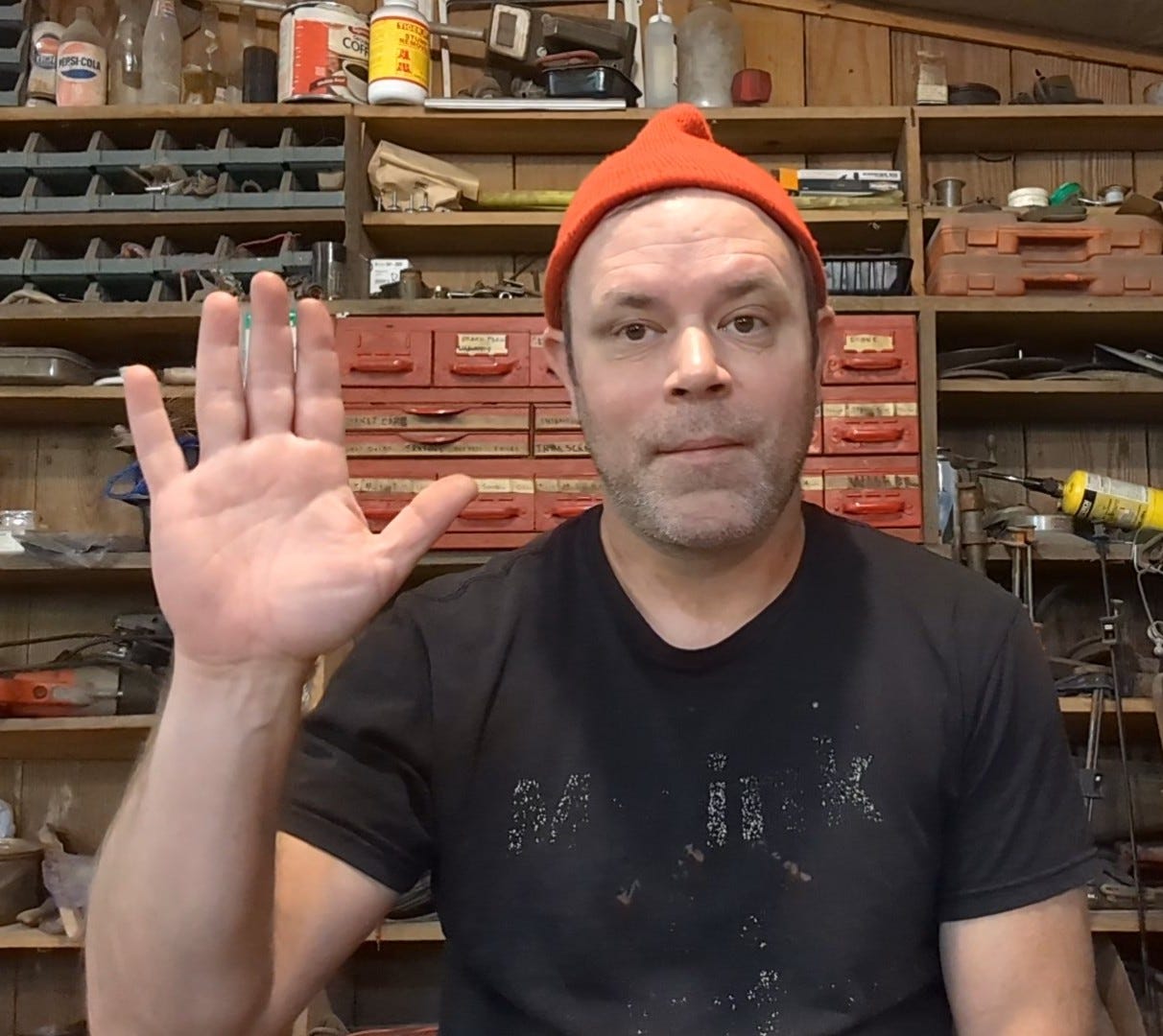
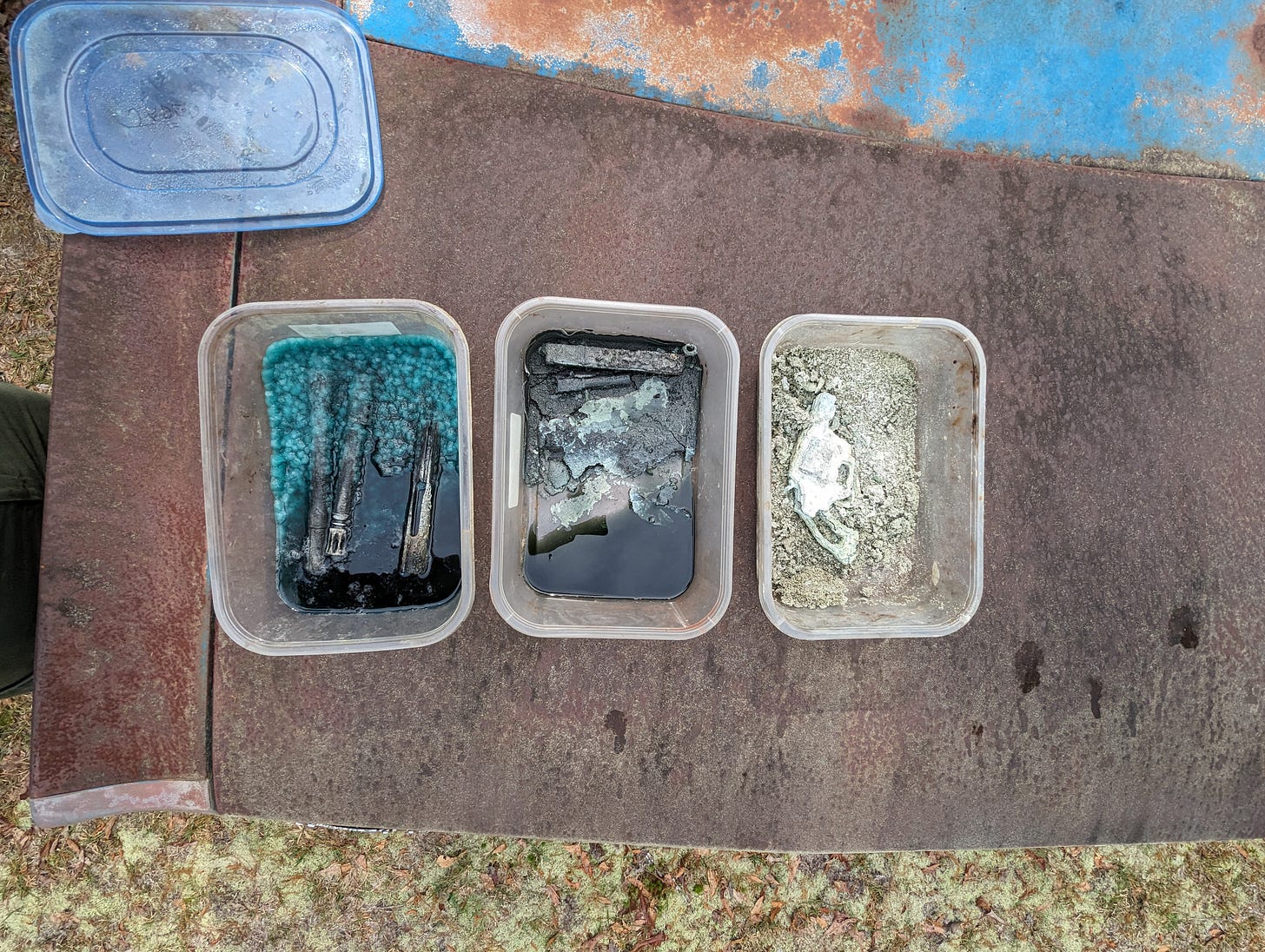
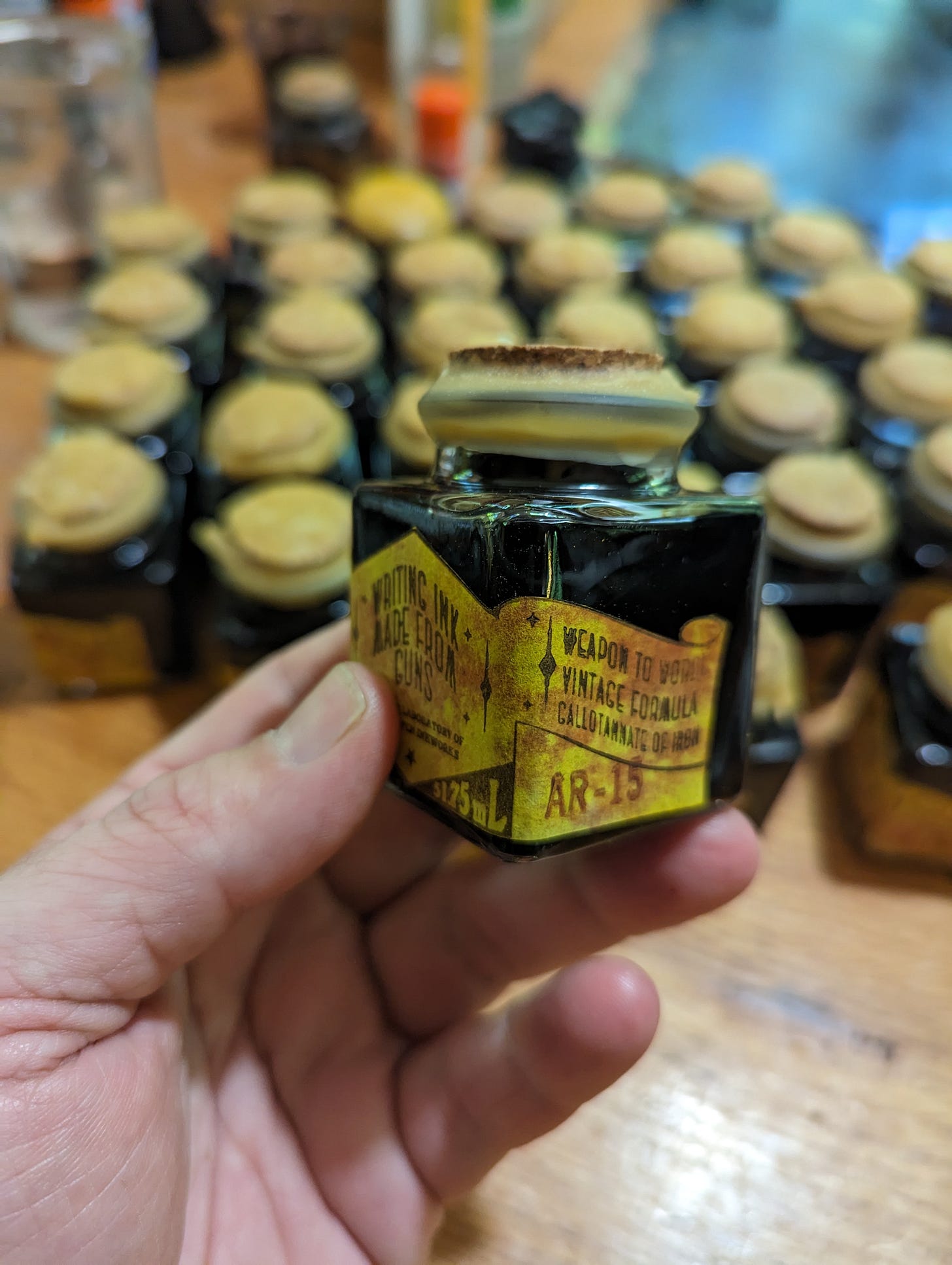
Never heard of anything like this. Fascinating!